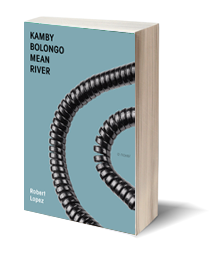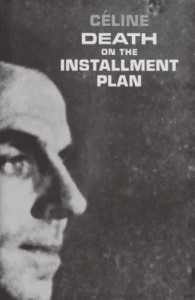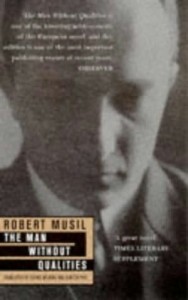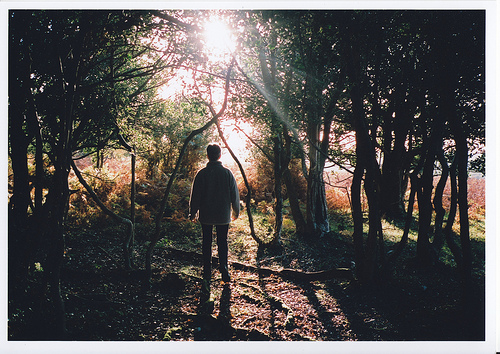Cultural Optometry Lesson

I hate eyewear ads where models who don’t need glasses wear glasses — just seems so fake, and makes me resent the models more for having better genes than me. (Would you have a leg amputee model shoes? — I think not.) I also get annoyed at legally-blind intellectuals who feel they are above Lasik surgery, or think that contacts are a cosmetic option. Chomsky said “From the popular culture to the propaganda system, there is constant pressure to make people feel that they are helpless, that the only role they can have is to ratify decisions and to consume.” I think what he meant was: people are made to feel like they need to buy stuff to feel better. No conspiracy Noam, it’s called a shopping mall. Speaking of feeling better, I think I would feel better if Noam bought new glasses, maybe even the more expensive “featherweight” lenses. In short, glasses ought to be real, but not too thick. Everyone is either shallow or too deep; just give me a kiddie pool to drown in. Thank you for accepting the truth, and for being able to see this.
Michael Kimball interviews Robert Lopez
 Another excellent Michael Kimball interview at the Faster Times, this time with Robert Lopez, whose Kamby Bolongo Mean River should be on each and every Best of the Year list that knows anything about anything. Seriously had a more visceral emotional response to this book than any in recent memory, in the strangest of ways, such that I ended up just staring off between each sentence, feeling it bump around inside my head. An incredible example of how voice and sentences alone can create a heavy, gorgeous, multivalent whole. I’m giving a copy to my mom for Christmas this year.
Another excellent Michael Kimball interview at the Faster Times, this time with Robert Lopez, whose Kamby Bolongo Mean River should be on each and every Best of the Year list that knows anything about anything. Seriously had a more visceral emotional response to this book than any in recent memory, in the strangest of ways, such that I ended up just staring off between each sentence, feeling it bump around inside my head. An incredible example of how voice and sentences alone can create a heavy, gorgeous, multivalent whole. I’m giving a copy to my mom for Christmas this year.
We (still) Want Your Literary Tattoos!

Dan, Brighton England - text from Neuromancer by William Gibson
Some of you may remember that back in July, I posted a call for submissions to a book of photographs of literary tattoos. The book, The Word Made Flesh: Literary Tattoos from Bookworms Worldwide (edited by Eva Talmadge & Justin Taylor) has since become a reality, and will be published by Harper Perennial, probably next fall. Why am I telling you this? Because even though we have received hundreds of delightful and sometimes insane submissions, we are still collecting through the end of 2009, and we want you to be in our book. The process is very simple: (1) have a literary tattoo; (2) take a clear, focused, high-res photograph of that tattoo; (3) email that photograph as a jpeg attachment to tattoolit[at]gmail[dot]com, along with a paragraph or so talking about the tattoo and/or the literary work that inspired it, plus as much or as little personal data (name, location, etc.) as you feel like sharing (but even if you stay anon., please please give credit to your tattooist & their shop!). That’s all there is to it. Unless of course you don’t have a literary tattoo yet, in which case simply insert “get a literary tattoo” as (1), re-number the rest of the list accordingly, and proceed. And if you do get a literary tattoo just for the purpose of being in this book, make sure you mention that in your note. It will light us right up. Also, process pics! We’ve seen a few of these and they are great.
For more details about image resolution and tech stuff (if the file isn’t usable, it doesn’t matter how rad your ink is) have a look at our original call for subs, or just email us with your questions. (A lot of people wonder if their tattoo “counts” as literary–the answer is usually yes, so just ask.) And please feel free (encouraged!) to link to, re-blog, and fwd along this post to any person or online community you think might be interested. We want to make the best, fattest, wildest book that we possibly can. Thanks, and cheers.
A book by its cover



It’s funny how publishers convey to their readership how tedious and non-pleasurable a book will be based on the lack of color on the cover. Stick some guy’s grainy face on there and consider the suicide pact signed. In my indulgently dour youth, I would only read books with grim black n’ white covers, thinking that such monochromatic plight was “deep,” and that I was similar to those intense and austere men in our refusal of hue. True, many of these books and their designs happened before color photography, but it seems most of the incidents were retroactive.
Wish You Were There: Audio from the Agriculture Reader @ NYU Now Available Online
 On Friday, November 6, Jeremy Schmall and I hosted Jen Hyde, Heather Christle, Joshua Cohen, Diane Williams, and Matthew Rohrer at the Lillian Vernon Writers House at NYU, for a reading in celebration of AGR ’09. The audio of the reading is now available online here (.mp3). After you listen to our event, you should wander over to the Creative Writing Program’s podcast mainpage–it’s a real treasure trove. Charles Simic talking to Alice Quinn. Elaine Equi and Darin Strauss reading together. An evening with Wave Books (Joshua Beckman, Noelle Kocot, Chelsea Minnis–which I was in the audience for; try listen for my clapping). And so on and so forth.
On Friday, November 6, Jeremy Schmall and I hosted Jen Hyde, Heather Christle, Joshua Cohen, Diane Williams, and Matthew Rohrer at the Lillian Vernon Writers House at NYU, for a reading in celebration of AGR ’09. The audio of the reading is now available online here (.mp3). After you listen to our event, you should wander over to the Creative Writing Program’s podcast mainpage–it’s a real treasure trove. Charles Simic talking to Alice Quinn. Elaine Equi and Darin Strauss reading together. An evening with Wave Books (Joshua Beckman, Noelle Kocot, Chelsea Minnis–which I was in the audience for; try listen for my clapping). And so on and so forth.
Speaking of Sci-Fi
Great Days for Weaklings
 I read Dennis Cooper’s blog every day, and it’s always a pleasure, but I want to point out that there has been an especially good run this week, and so if you’re an only-occasional visitor over there, this is a good time to go check in. Let’s move backwards through time.
I read Dennis Cooper’s blog every day, and it’s always a pleasure, but I want to point out that there has been an especially good run this week, and so if you’re an only-occasional visitor over there, this is a good time to go check in. Let’s move backwards through time.
Today’s post is a collection of eleven YouTube clips of Stephen Malkmus singing–solo as well as with Pavement. It kicks off with an acoustic version of “Box Elder,” one of my all-time favorite Pavement songs, which I’ve only ever heard rendered in full fuzz.
Yesterday was a “back from the dead” post–originally posted 10/19/06 on an earlier incarnation of the blog that was hacked and destroyed. DC occasionally painstakingly re-produces one of those lost posts, and I can’t think of one I’m happier to see again than “Great Moments in Gay Porn #8: Klark, a mini-retrospective.”
Career-wise, porn stars are to movie stars as dogs are to humans. That’s to say, their time in the spotlight may constitute a blip relative to their more respectable peers, but their lifespans as fan magnets can be no less storied and impressive. By that reckoning, Klark is something like the Paul Newman of Russian gay porn. In his ten or eleven year long run as a superstar, he has pretty much done it all without ever losing his Gary Cooper-esque stoicism (and consequent aura of dignity), his ever battle-ready attitude, his quasi-underraged everyboy bod, or his very Russian yet strangely nonspecific good looks. He may not get as many starring roles these days as he did when his competition was all but nonexistent, but he’s managed to outlast many of his famous predecessors by never quite stooping too low in his choice of roles to make a quick buck.
Irrespective of your particular level of interest in gay porn (my own is, let’s say, limited) Klark’s story is a compelling narrative, and I think the post is highly instructional in terms of how it approaches and handles certain challenges inherent in discussing an artist’s full body of work. Cheers to whoever it was put the special request in for this one.
Tuesday’s post was “Four Books I Read Recently and Loved: Urs Alleman, Eileen Myles, Reinard Seifert, Matthew Simmons.” In which DC enjoys and excerpts from (respectively) Babyfucker, The Importance of Being Iceland, How to Skin the Moon, and A Jello Horse. And Monday we learned about “Heavily plotted non-linear structures whose velocity lacks narrative drive“–aka, mazes.
Soft Focus: Will Oldham
Ian Svenonius is a bonkersbaby. So is Mr. Prince. Here they go. (Full archives of Soft Focus here.)
Samesies


Samesies finds photos taken by different people of the same thing. The collection is stunning, and reconfirms my faith that we are all sort of living the same lives. I think of Virginia Woolf’s The Waves, an account of one beach scene told by multiple characters, told over and over again, segmented by decades. It’s told in that murky VW way — and I suppose arguments and interpretations are possible — but I think the point is time, despite its grave capacity to shepherd one towards death, does not exist. And light behaves without prejudice, which is a start.


